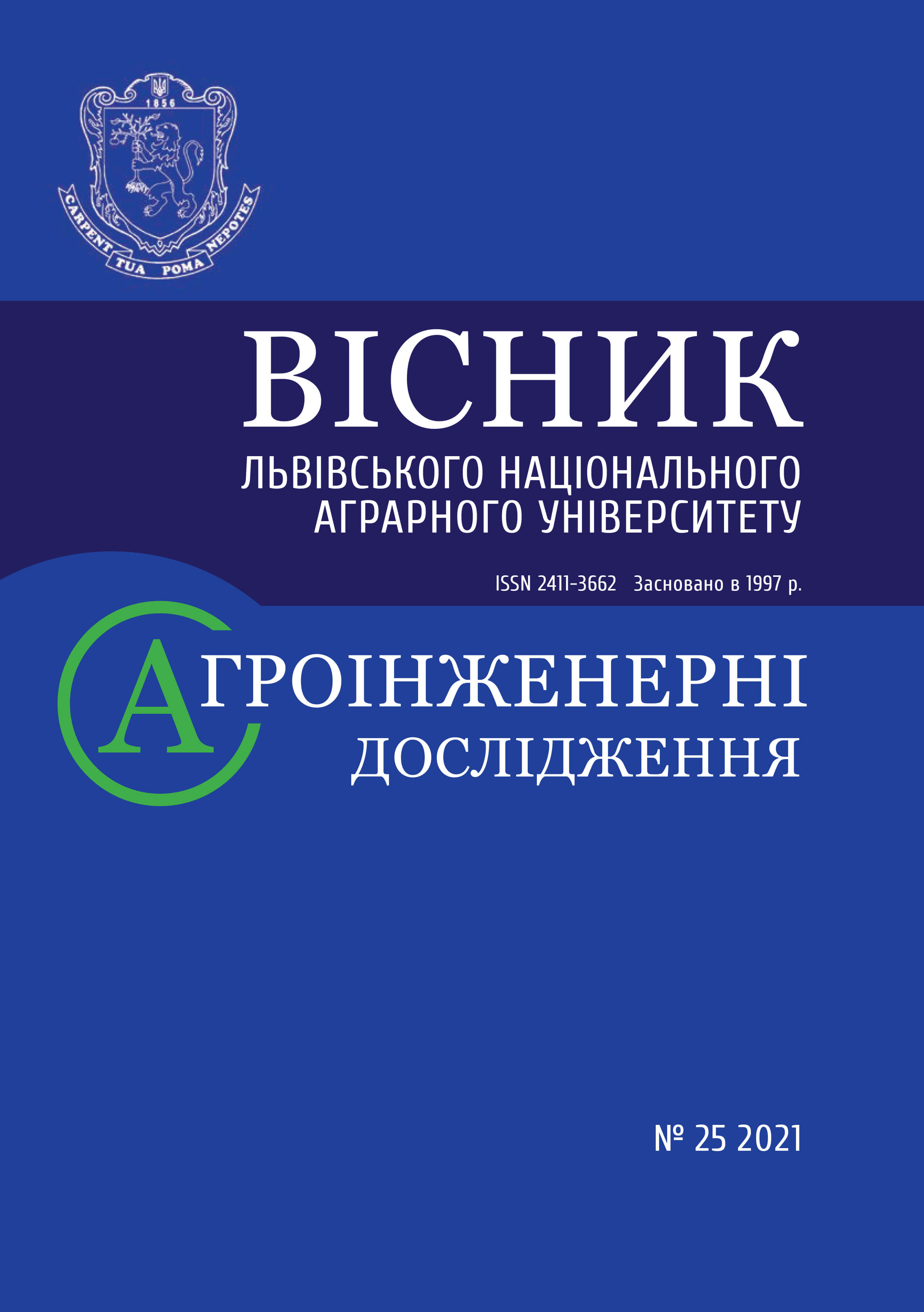Research of parameters of the process of washing of details in an ultrasonic bath
DOI:
https://doi.org/10.31734/agroengineering2021.25.057Keywords:
ultrasonic cleaning, optimization criteria, percentage of washed off contamination, response surfacesAbstract
The review and analysis of the theories on the use of ultrasound for cleaning parts gives reason to consider it expedient to search for new ways to optimize this process, as well as to develop new mathematical models for a more accurate description, taking into account the influence of various factors.
The purpose of the research was to determine the influence of three main factors on the process of washing contaminated parts using ultrasound. An ultrasonic cleaner Ultrasonic Cleaner JP-031S with a volume of 6.5 liters with a frequency of an ultrasonic emitter of 40KHz and a power of an ultrasonic emitter of 180W and 24 artificially contaminated fragments of a square tube with a mass deviation of no more than 1.15 % among themselves was chosen as a stand.
A full factorial experiment was carried out under the condition of influence of the following factors: duration of washing, temperature of the washing solution, concentration of an aqueous solution of washing components. The optimization criterion was the percentage of washed off contamination.
A matrix was created for implementation of the full factorial design . The reproducibility of the experimental results was confirmed using the Cochran’s C test, which made it possible to derive the regression equation in general form and calculate its coefficients. The significance of the coefficients was determined using the Student's test, and the variance of the adequacy of the corrected model was confirmed using the F-test. Thus, it was found that two factors x1, x2 (the duration of washing and temperature of the washing solution respectively) are significant with a 95 % probability.
After transition of the regression equation to the decoded form, a mathematical model was obtained. The model allows calculating the percentage of washed off contamination taking into account the factors considered and can be used for future calculations of optimization of the process of washing contaminated parts.
On the basis of the regression equation, the response surfaces were constructed, in which the dependences were extremely close to linear ones, i.e. as the washing time, the temperature of the washing solution and the concentration of the aqueous solution of
References
Adler, Iu. P. (1969). Vvedenie v planirovanie eksperimenta. Moskva: Metallurhyia. (in Russian).
Chernyshov, O. V., Muzychka, D. H., Trykilo, A. I., & Yanovskyi, V. A. (2018). Pidvyshchennia efektyvnosti protsesu ochyshchennia metalevoi struzhky vid mastylno-okholodzhuiuchykh ridyn za dopomohoiu myiuchykh rozchyniv. Visnyk KrNU imeni Mykhaila Ostrohradskoho, 5 (112), 103–109. (in Ukrainian).
Fuchs, F. J. (2002). Ultrasonic Cleaning Fundamental Theory and Application. Retrieved from: https://ntrs.nasa.gov/citations/19950025362.
Hicks, Ch. R., Kenneth Turner, V. (1999). Fundamental Concepts on design of Experiments. Oxford University Press.
HOST 11.006-75. (1981). Prikladnaia statistika. Pravila proverki sohlasiya opyitnoho raspredeleniia s teoreticheskim. Moskva: Yzd-vo standartov. (in Russian).
Johnson, N. L., & Leone, F. C. (1977). Statistics and Experimental Design in Engineering and the Physical Sciences (Vol. 1). New York.
Keller, O. K., Kratyish, H. S., & Lubianitskii, H. D. (1977). Ultrazvukovaia ochistka. Leninhrad: Mashinostroenie. (in Russian).
Mason, T. J. (2016). Ultrasonic cleaning: an historical perspective. Ultrasonics Sonochemistry, 29, 519–523.
Morkun, V. S., & Kravchenko, O. M. (2019). Osnovni napriamky vdoskonalennia keruvannia protsesom ultrazvukovoho ochyshchennia. Visnyk Kryvorizkoho natsionalnoho universytetu, 49, 3–9. (in Ukrainian).
Panov, A. P. (1984). Ultrazvukovaia ochistka pretsizionnyikh detalei. Moskva: MAShHYZ. (in Russian).
Vainshtok, Y. S. (1958). Ultrazvuk i eho primenenie v mashinostroenii. Moskva: MAShHYZ. (in Russian)
Verhaagen, B., & Rivas D. F. (2016). Measuring cavitation and its cleaning effect. Ultrasonics Sonochemistry, 29, 619–628.
Vetrimurugan, & Lim, T. (2013). Experimental Investigation of Ultrasonic and Megasonic Frequency on Cleaning of Various Disk Drive Components. International Journal of Chemical Engineering and Applications, 4 (4), 174–177.
Weller, R. N., Brady, J. M., & Bernier, W. E. (1980). Efficacy of ultrasonic cleaning. Journal of Endodontics, 6(9), 740–743.


